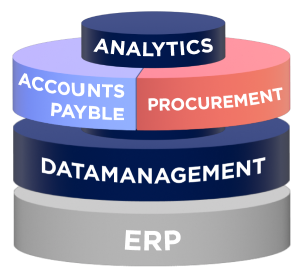2 min read
Automation begins where digitisation ends
Jeroen Rozeboom, Digital Transformation Specialist
Mar 29, 2017 2:48:55 PM
“The market has been demanding the digitisation of document streams for years,” says Jeroen Rozeboom, Sales Manager at ICreative. In particular, the digital processing of incoming invoices. This can only produce benefits: transparency of the process, invoices and attachments retrievable at any time, simplicity of auditability, sharing knowledge and so on. The sooner a document is digitised, the better - that’s the motto.
Digital tunnel vision
In recent years, full automation, or robotisation, of the Accounts Payable (AP) process has become increasingly popular. Invoices must be fully automatically matched with orders and/or contracts, preferably on a line-by-line level, so that no human intervention is necessary in the processing of invoices. ‘Straight Through Processing’ is the goal. Because this can produce significant cost savings, accompanied by qualitative improvements.
“Despite the flirtation with full automation, companies are chiefly investing in improving the scanning and recognition process, without asking themselves what is the best way to get the right data in order to truly automate the AP process,” Rozeboom explains. “Why do people want 100% recognition of data from an image, when they already have the source of the data, in the form of an ERP or similar system?” In practice, automatic recognition on a line-by-line level delivers a maximum of only 70% of the available data. To achieve this, considerable time and energy needs to be invested in advance in training the recognition software. And because 100% recognition is not achieved, at least 30% of the data still needs to be entered manually. For each invoice. Every day.
Automation requires a different perspective
Most organisations claim to have an automated AP process but, in fact, there are still significant gains to be made in the field of efficiency, as long as people let go of their current processes, and the digitisation thereof, and begin to recognise the benefits of automation. “That recognition might well begin with dropping the digitisation of documents (paper) and images (PDF), and with the introduction of electronic documents, such as electronic invoices (e-invoices),” says Rozeboom.
“We often hear that this is impossible or that it is simply not done to ask this of suppliers. All kind of excuses are made for not setting up an automation process in which suppliers have to be involved.” The enormous benefits this would have in terms of efficiency and cost reduction fall on deaf ears. But why, then, has the Netherlands’ largest e-retailer succeeded in this? And why is the same thing true of the Netherlands’ largest insurer?
Take the insurer, for example. It receives all invoices in a standard XML format, regardless of their origin, after which the data is processed directly in the ERP system. Matching, booking and payment status are handled fully automatically and without human intervention. Parallel to this, campaigns have been run to inform suppliers of the benefits of electronic data transfer, through which all parties can realise a more efficient and sustainable process structure. “They reduce their operational costs and, in doing so, consolidate the client-supplier relationship,” Rozeboom concludes. “And thanks to the ‘continuous improvement’ programme, it gets better every day.”
What is needed for this? Commitment and the drive to achieve operational excellence. In other words, perseverance and a partner with business knowledge. Curious about what automation of your purchase to pay process can mean for your company (and suppliers)? Send me an e-mail or give me a call and we can look into it together.
Jeroen Rozeboom
Sales Director, ICreative
jrozeboom@icreative.nl
06 45 974 097
About ICreative
ICreative delivers purchase to pay and e-invoicing solutions. As one of the main Basware partners in the world, we automate procurement and invoice processing for large companies, multinationals, educational and governmental institutions. Regardless of the ERP systems in use, including SAP and Oracle, and regardless of the number of offices, countries, currencies and languages in scope.







